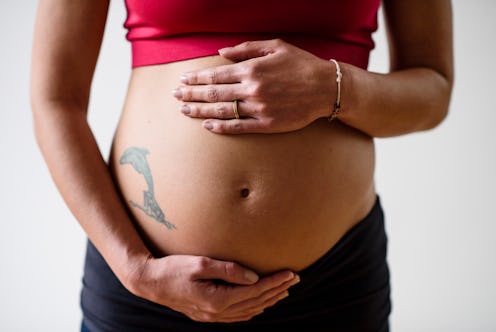News
The Teen Birth Rate Just Hit A Record Low

The Centers for Disease Control and Prevention released a study Friday announcing that the United States' teenage birth rate hit record lows in 2016. About 20 American girls per every 1,000 between the ages of 15 and 19 gave birth last year, representing a 9 percent decline from 2015, and the rate fell for both younger teens (15 to 17) and older teens (18 to 19).
Dr. Elise Berlan, a doctor specializing in adolescent medicine at Nationwide Children's Hospital, told CNN that contraception is the leading factor behind the lowered birth rate. That fits with another CDC study released earlier this month that found that the rate of teens having sex hasn't fallen as drastically as the birth rate, but that more teens report using contraception than they did a generation ago.
"Data [from previous years] really suggests it is access to contraceptives and use of contraceptives that has really led to these kind of changes," Berlan told CNN. "Most teens are using some form of birth control — the condom, followed by withdrawal and the pill."
Since 1991, the percentages of women 15 to 29 having babies has fallen sharply, while the rates of women 30 to 44 having children has increased only a little. That's left the national birth rate also at a record low, worrying some social scientists. Birth rates need to remain stable so that populations don't "age," creating an imbalance in resource allocation and the workforce.
However, there are several other factors that may make the birth rate reduction not such a bad thing. The CDC study doesn't consider the net population of the United States, which sees a gain of about one every 13 seconds, according to the US Census Bureau. Plenty of those people are children or working aged and can be just as useful to the economy as a native born citizen. Also, the reduction in birth rates for teens means that women are putting off motherhood in favor of other pursuits, like going to school, saving for the future, or just having life experiences.
“What this is is a trend of women becoming more educated and more mature," Donna M. Strobino, a professor of population, family and reproductive health at the Johns Hopkins Bloomberg School of Public Health, told The Washington Post. "I’m not sure that’s bad."
The birth rate is just one isolated measurement of demographic stability, but the most important thing here is that a lot more young girls are getting to stay young girls as a result of increased access to contraception, indicating that reinforcement of this policy could be effective in getting the teen birth rate as close to zero as possible. Eliminating early motherhood is one of the best ways to ensure women's participation and thriving in the economy, so it's to the United States' advantage to use every tool in its box to reduce teen pregnancy.